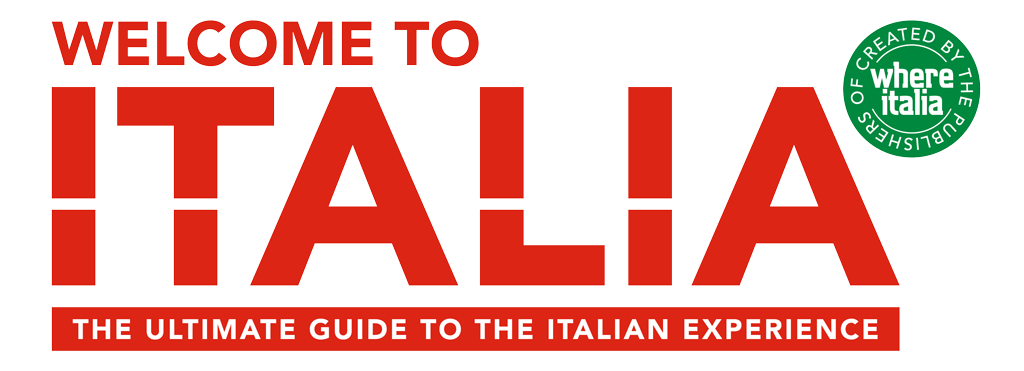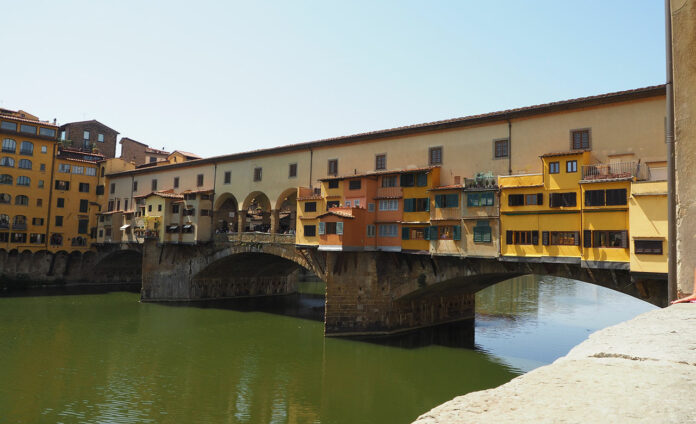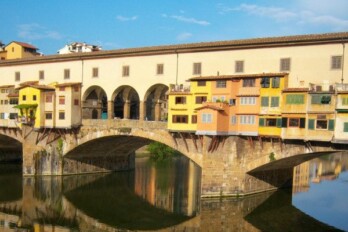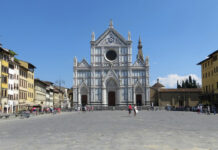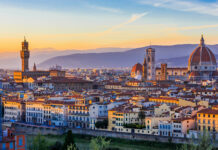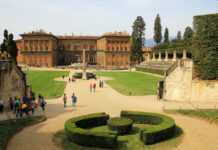The official date of the foundation of the current Ponte Vecchio is given as 1345. For the entire Middle Ages, the bridge hosted greengrocers’, fishmongers’ and butchers’ shops, who used the river to dispose of their waste in a hurry. At the end of the 16th century, however, when it became the “noble” zone of the city, the goldsmiths and jewellers started to arrive, and they have been there uninterruptedly to this day.
First of all, it must be said that Ponte Vecchio (literally “Old Bridge”) is indeed “old”. The first to identify a ford in the Arno, at this very point, were the Etruscans, in the 7th century before Christ. The Roman founders of the village of “Florentia” built a wood and stone bridge there, the forerunner of the current one, which dates back to around 1345. Since then, with all the various restorations and modifications, this passage across the Arno has remained in its place, actively participating in the history of the city.
The bridge is characterised by a solution with lowered arches, never previously seen, which makes it particularly stable and its profile unmistakable. From the very beginning, it was understood to be a natural continuation of the road, and so it has shops and porticos along both sides facing towards the centre, each with a single shop window closed by strong wooden doors, and often with a picturesque backroom protruding over the river. Then, grafted onto the high part of the bridge is the Vasari Corridor, the strategic passageway that was built at the wishes of Cosimo de’ Medici in 1565 to connect the administrative buildings to his private residence, without exposing the sovereign and his heirs to any danger.
The change of identity of the zone during the Renaissance is due precisely to the Vasari Corridor. The traditional shops of greengrocers, butchers and fishmongers, who had a preference for the bridge on account of the ease with which they could throw their waste into the river, were evicted en bloc: it was preferred to offer the sovereign goldsmiths’ and jewellers’ shops, which were more appropriate for his gaze (and his nose), and they have continued their presence there ever since for the pleasure of tourists.
For more than four hundred years, Ponte Vecchio has therefore been inhabited by artisans creating admirable gold and silver objects. Still today, this remains the commercial vocation of the neighbourhood, which is nevertheless not lacking in other luxury trades, starting with artisan leather goods. Obviously, the accesses and areas surrounding the Bridge, between Via Por Santa Maria and Lungarno degli Archibusieri on one side, and between Borgo San Jacopo and Via de’ Guicciardini on the other, are also swarming with points of interest and high-quality shops. Bear in mind, however, that sometimes you need only turn into an unknown alley to get away from the bustling crowds and enjoy a carefree stroll.





